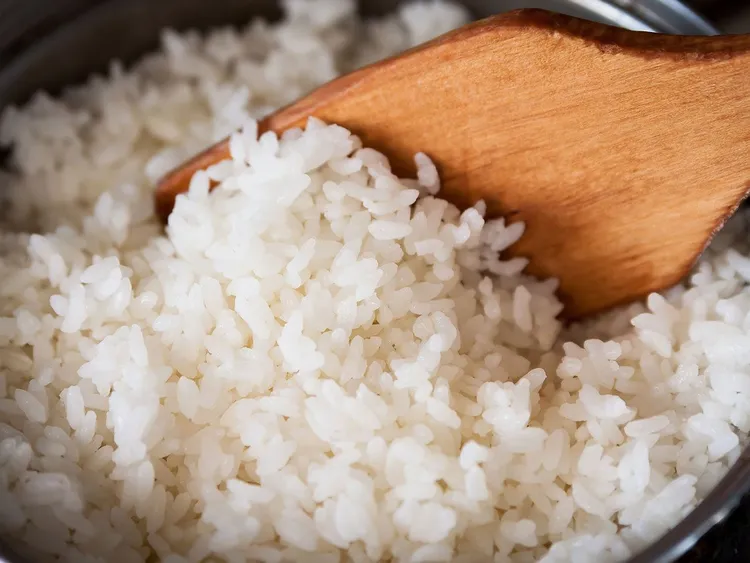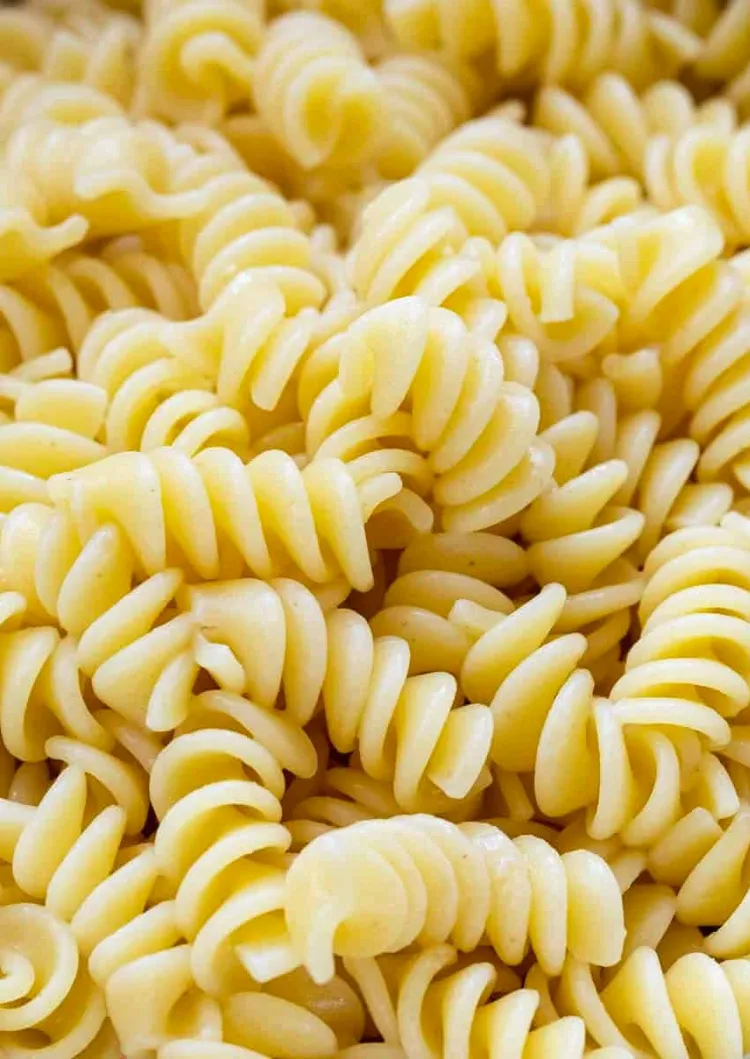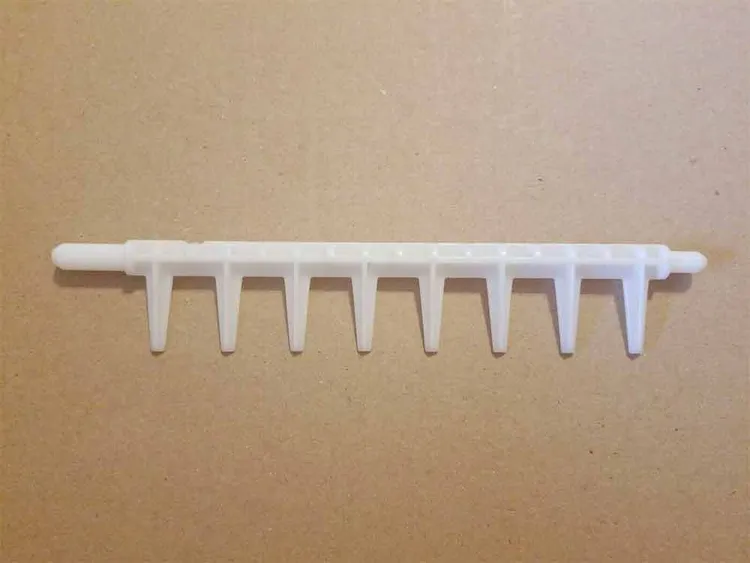Our recommendations are made independently through Research & Testing. We may receive commissions from purchases made via our links.
How to Store Celery
Looking for more information on how to store celery? Our celery storage guide can help you keep your celery fresh and crisp for a couple of months.
If you don’t know how to store celery the right way, you’re already at a huge disadvantage in the kitchen.
Celery is undoubtedly the cook’s work-horse vegetable. You can use it as a garnish or prepare it separately as a side-dish. There are plenty of main-course recipes that have celery as a major ingredient (think Hong Kong-style stir-fried chicken). You also have the option to make a glass of celery juice, which is a beverage packed densely with nutrition.
Unfortunately, celery typically doesn’t last very long. When improperly stored, it will wilt and become limp in only 2 or 3 days.
Here’s how to keep your celery ribs fresh and crispy for a long time.
Why You Shouldn’t Store Celery in Its Original Packaging
A lot of people have the habit of keeping their fruit and vegetables in the original packaging that they came in. For many types of produce (mushrooms, for example), this is a recommended practice. However, it is not recommended for celery.
The moment you get the celery home, take it out of the package and put it into a different storage vessel immediately.
This is because celery produces a gas hormone called ethylene as it ripens. The original plastic packaging is not breathable and will trap ethylene inside as a result. When celery is overexposed to ethylene, it will turn yellow and wilt.
The Best Ways to Store Celery
For fresh celery stalks, the best storage method is to wrap them up in aluminum foil and store in the refrigerator. When stored in this manner, your celery will last anywhere from 2 to 4 weeks.
If you have cut up your celery, you will have to resort to a different technique. Submerge the cut celery in water.
Once the celery is cut up, it will lose moisture at a quicker rate. Water will help hydrate the celery stalks and keep them fresh until you find a use for them. Your celery will last 1 to 2 weeks using this method.
If you want to store your celery for the long term, you can choose to freeze it. If done right and stored at a constant temperature of 0°F, your celery stalks are guaranteed to last 12 to 18 months.
How to Store Celery For Maximum Freshness and Crispness
1. In the Fridge
Rinse your celery stalk before storing. Simply put it under cool running water and rub all of the visible dirt residue off its skin. Dry carefully and make sure that all hints of moisture are gone.

Do not cut off the head of the celery. If you do, the celery will rapidly lose moisture and wilt.
Wrap up your celery stalk in aluminum foil. Wrap it tight enough that moisture will be retained, but the ethylene gas can escape.
Once it has been properly wrapped up, you can put the bundle of celery in your fridge’s crisper drawer.
2. Store Celery in Water
This method can be used to store celery sticks or cut celery.
The first thing that you will need is a large plastic container. It should preferably have a lid. If it doesn’t, you can wrap up the top of the container using plastic wrap, instead.
If you don’t have a container, you can use a large glass bowl. Later, you can fashion a “lid” using plastic wrap.
As for the celery, if you haven’t already, cut off the base of the stalk. Then, cut each stalk into equal halves crosswise.
Put the celery halves into your container of choice. Pour filtered water in until it fills the container. The celery stalks should be submerged.
Seal up the container either with a lid or plastic wrap. Store in the refrigerator.
Make sure to change the water daily or once every two days. Fresh water will keep the celery healthy throughout the week.
3. How to Freeze Celery
Preparation
After washing the celery, trim and cut the stalks into smaller pieces. The size of the cut will be entirely up to you.
If you plan to use them for salads or sautées, cut them into thin ⅛ or ¼-inch slices crosswise. For soups and salads, celery batons are preferred. Cut each celery stick into 1.5 to 2-inch sections lengthwise.
Blanching
Celery can be frozen blanched or unblanched. Nonetheless, we highly recommend that you blanch it prior to freezing. Blanched celery will retain its color and texture and taste better than its unblanched counterparts.
To blanch celery, bring a pot of water to the boil on the countertop. While the water pot is boiling, prepare a different bowl. Put ice water into this second bowl.
Cook the celery cuts in the boiling water pot for approximately 3 minutes.
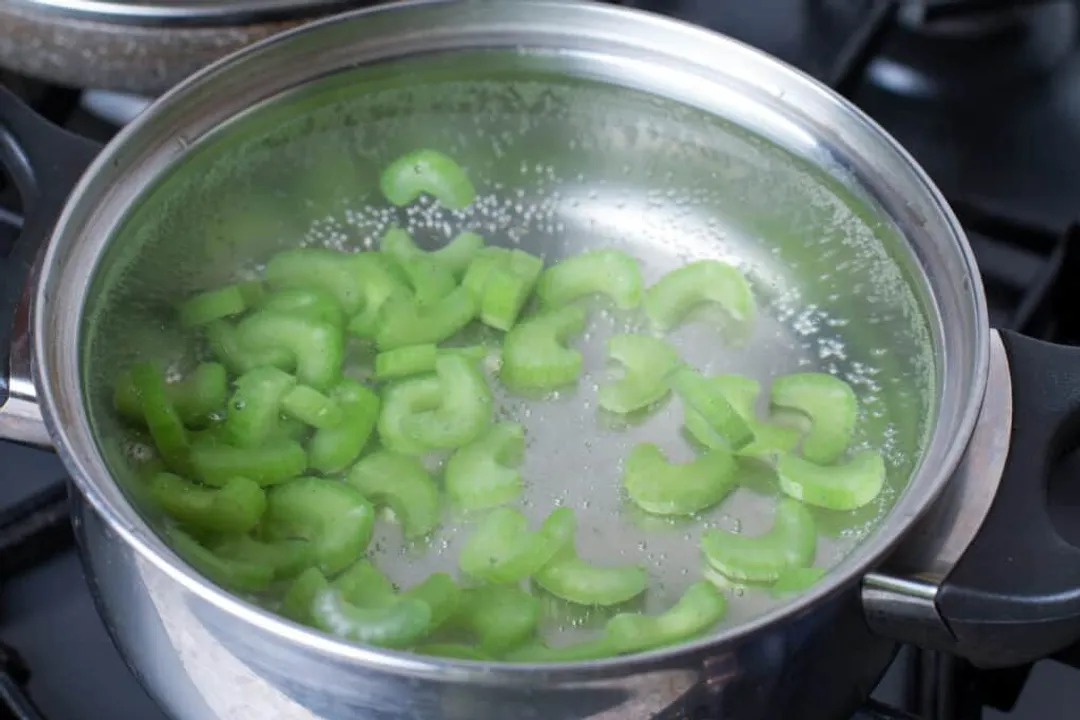
Then, fish them out and immediately dunk them into the ice water bowl.
Once the cuts have cooled down, bring them out and allow them to completely dry on a towel.
Freezing
Bring out a baking sheet and spread the celery cuts on it. Put into the freezer overnight to freeze.
The day after, check on the celery cuts to see if they have frozen nicely. If they have, transfer the cuts into resealable plastic bags. Before sealing the bags, make sure to squeeze as much air out as possible. Air will deteriorate the celery cuts while they’re in storage.
Label the bags with the name and freezing date. The labeling will make it easier for you to track the celery’s expiry date.
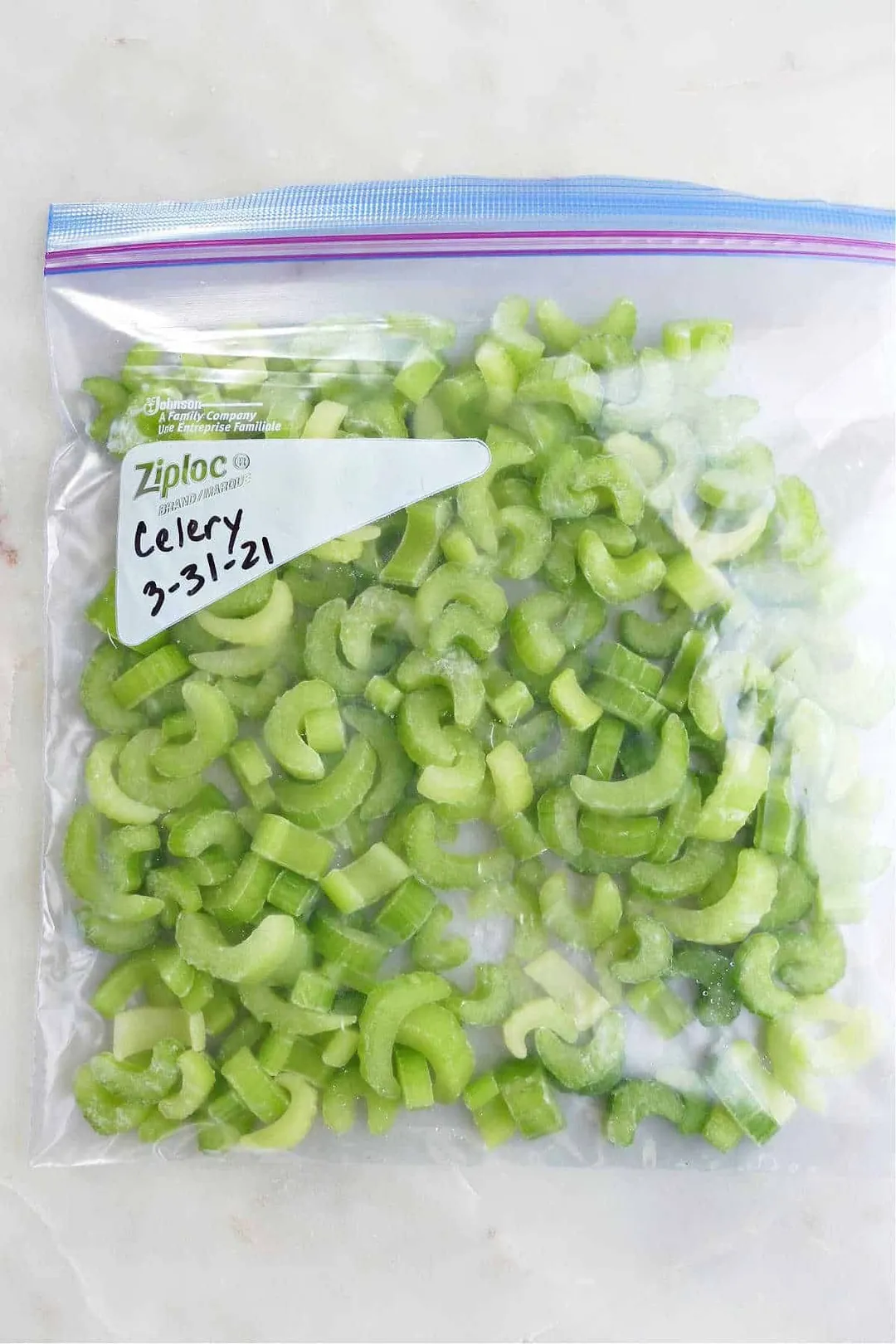
Put back into the freezer and store at 0°F.
Celery freezes very well and can remain in good condition for 12 to 18 months inside the freezer.
Conclusion
Compared to quite a lot of other vegetables, it’s pretty simple to learn how to store celery. Now that you know what to do, test it out in your kitchen!
Authors
Luna Regina is an accomplished writer and author who dedicates her career to empowering home cooks and making cooking effortless for everyone. She is the founder of HealthyKitchen101.com and HealthyRecipes101.com, where she works with her team to develop easy, nutritious recipes and help aspiring cooks choose the right kitchen appliances.

